By Yiğit Saner, Donbass / Russia
As invited guests of the Moscow-based “Culture Volunteers” we visited Donbass. Here is a war zone since 2014. The press tour was between 1-4 October. The aim of the tour has been organized for five years to let journalist witness realities of Donbass with their own eyes, that the reality is quite different than portrayed by Western media. Journalists from Germany, US, Cameroon and Italy participated.
Our hosts set Donetsk, the capital of the Donetsk People’s Republic (DPR), as our central location. Donetsk, though scarred by war and is bombed occasionally, is slowly returning to normal life. The organization’s resources allowed us to access military zones not easily reached by outsiders. We are hosted by DPR leader Denis Pushilin. We witnessed the destruction caused by the Kiev regime and how Russia managed to restore the region. We heard firsthand accounts from the official and common people about the atrocities committed by “Ukro-Nazis”.
We will share our observations of the four-day visit.
Our journey began on September 30. It is a special date as it is the anniversary of DPR’s joining to Russia. Unfortunately, due to the 14-hour drive from Moscow to Donetsk, we missed the parade. However, we learned that on this symbolic day Kiev forces attacked Donetsk, resulting in the death of a 25-year-old and injuring eight others.
Upon entering Donbass, we were accompanied by an escort as we went through dark, narrow roads through small settlements. We stopped at some check points, but they didn‘t control the passports. By time, we began to see more military vehicles. So, we are into more “hazardous” areas…
By midnight, we arrived in the city. In our resident one of the German journalists, who had lost his university job for reporting on the realities of Donbass with his first-hand experience, told that a missile hit the entrance of the building, and a person lost his life last year.
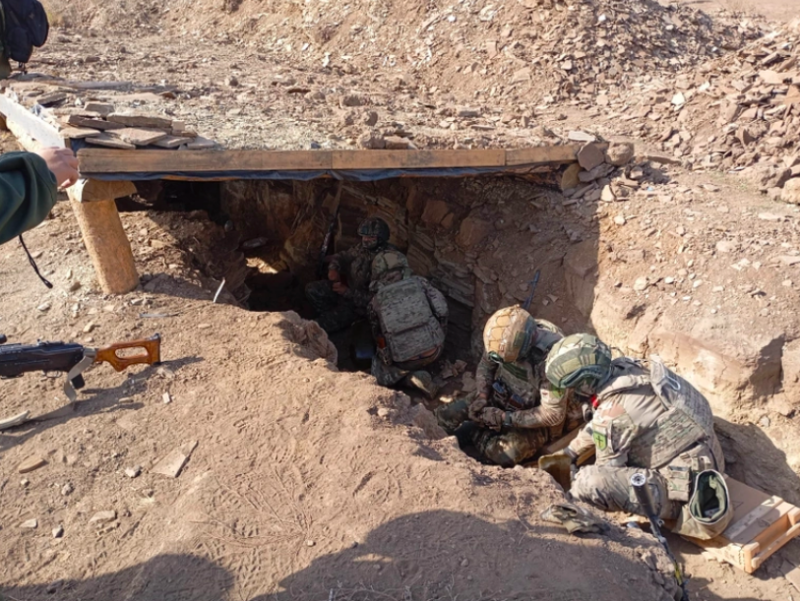
The other two Germans didn’t want to be in the photos and videos due to the pressure in their country. They also requested us not to mention their names in our news.
The next morning, after a two-hour drive through rural areas, we arrived at a remote military base. Here is a special battalion called “Maksim Krivonos” composed of Ukrainian volunteers fighting for the Russian army.
Established in 2023, this battalion is named after one of the leaders of 17th-century Cossack peasant uprisings, Maksim Krivonos. Their capture of Georgian mercenaries fighting for Kyiv made them widely recognized.
As we got out of the bus, a two-meter long masked soldier greeted us. He distributed bulletproof vests and helmets and helped us to put them on.
For security reasons, it is prohibited to take photos of the horizon and surrounding buildings. In previous years, some visuals and videos shared on social media have led to the identification of headquarters’ locations and to be struck. However, they told us that we can film the soldiers.
We boarded the armored vehicles. Our vehicle was driven by that long soldier. He put his rifle right behind the gear shift. We speeded along the bumpy roads and arrived at the training ground.
The training area is vast and numerous soldiers are around. There is a constant sound of explosions: automatic rifles, rockets, RPGs, drones, and grenades. They first took us to a shelter. There we met one of the battalion commanders, code-named Jak. He told us that nearly all the volunteers switched sides, that is, they were initially serving in the Ukrainian army.
He emphasized that the volunteer units are not under the command of the Russian Defense Ministry. He reminded us that we are in a very dangerous location, that we must be extremely careful and follow the instructions. We exited the shelter and found ourselves right in the middle of a training session where bullet casings are flying.
They are shooting between the wrecked tanks and vehicles, and targets. When you look at the ground, it’s hard to tell whether there are more stones or bullet casings. Small explosive-laden drones buzz overhead and hit the targets. To the left of the area, there are snipers who are very hard to spot with their camouflage.
Meanwhile, they make an unusual offer: “You can fire with Kalashnikovs”. We don’t miss this opportunity, and, after a brief one-minute training session, we grab the rifles.
After this part we went to the next stage. Now, the evacuation of wounded will be simulated. They line us up on a line. Crossing this boundary is prohibited. With a dust cloud, an armored truck carrying soldiers rolls onto the scene, driving toward the enemy positions ahead, and clashes start between the soldiers disembarking from the truck and those in the trench.
Amidst all this, they also organized a meal. We drank soup that looks like borscht. The commander, apparently the most senior soldier in the battalion, offered us vodka from his canteen. He raised his plastic cup in honor of Donbass.
After lunch, we headed to another location. We walked along a path marked with fresh bloodstains to meet with the Ukrainian volunteers. Cameras are set up, notebooks are opened, and about ten soldiers gather around us.
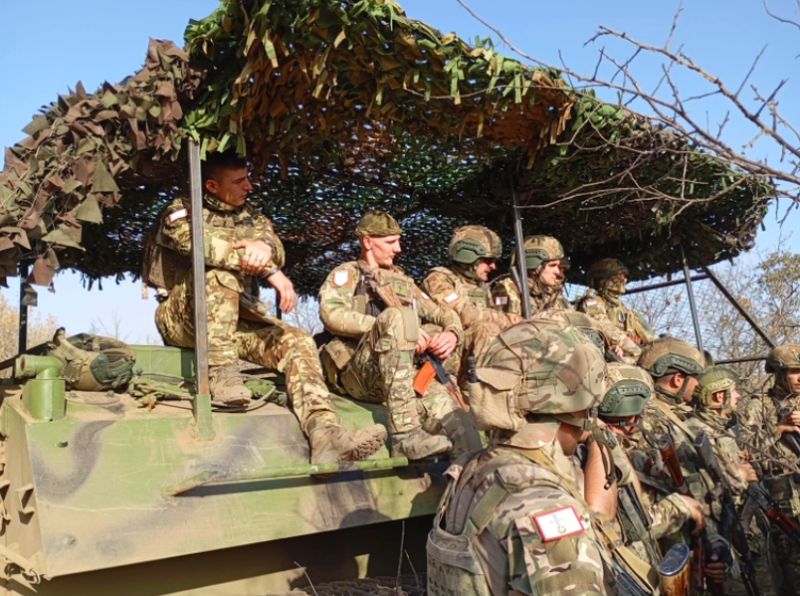
A significant portion of the volunteers in the battalion has switched sides after surrendering or being captured by the Russian forces. Most of them are motivated to free their country from the hands of those ruling Kyiv. They identify themselves as Ukrainian patriots and prefer terms like “Kyiv regime” or “Zelenskyy regime” instead of referring to Ukraine.
A volunteer known as Nemo says, “I fought both against Russia and for Russia.” He tells how Kyiv forces bombarded the people evacuated from Mariupol in 2022. “We have the courage to fight against Zelenskyy, we are making history,” he adds.
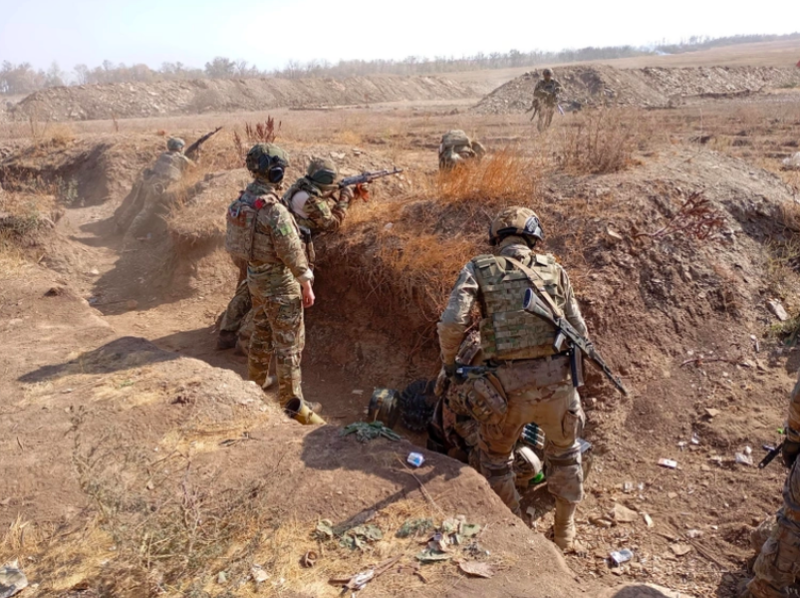
Bravo, a soldier who joined the Russian forces after being captured in January 2024, emphasizes, “I’m fighting to be beneficial for my homeland.” Another soldier, known by the codename Snake and coming from Kyiv, shares, “We are one nation and our religions are the same. I don’t even understand why we are fighting. The Zelenskyy regime must fall for the war to end.”
A volunteer who accidentally joined the Kyiv forces while looking for work and later switched sides expresses that he is “very worried about his family on the other side.” Maksim, who found himself on the battlefield while writing his university thesis, was sent to Donetsk and decided to switch sides after witnessing Ukrainian forces target civilians. All of his relatives are on the other side, and he has no news from them.
Sidoy was sent to the front lines after a month and a half of training and was wounded. On the 26th day at the front, he joined the Russian army. His aim is like the others: to bring peace to his country. “We are fighting to change the Kyiv regime,” he says.
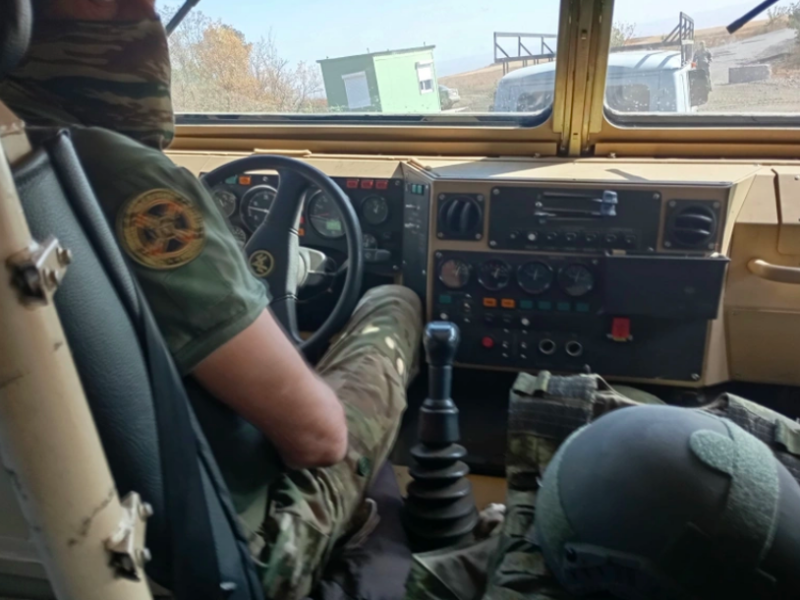
While listening to the soldiers, a siren starts blaring. We are hurried into a shelter because of a possible attack. We wait inside and hear the sounds of explosions. It’s hard to tell whether the noise is coming from our battalion or an enemy attack. Another signal comes and we’re outside again. No one else seems disturbed other than us.
Our casual conversation with the soldiers continues for a little while longer. Then comes the final surprise of the day: The soldiers driving our vehicles start racing across the rugged terrain. One of them jokes about it being like the “Paris-Dakar rally” and laughs about our dust-covered faces.
Dan Kovalik, an American writer, academic, and activist, was also part of our team. Dan teaches at the University of Pittsburgh’s School of Law and has been producing works about Donbass and Russia since 2016. However, with the start of the Special Military Operation in February 2022, the witch hunt that began in the West affected Dan like many others.
He told us the followings:
“Yes, I started writing about it after the Special Military Operation began. I actually wrote a very well-received article arguing that, from the perspective of international law, Russia has a debatable right to intervene in Ukraine under Article 51 of the UN Charter because it recognized Donetsk and Luhansk as sovereign countries and had an agreement to protect them.
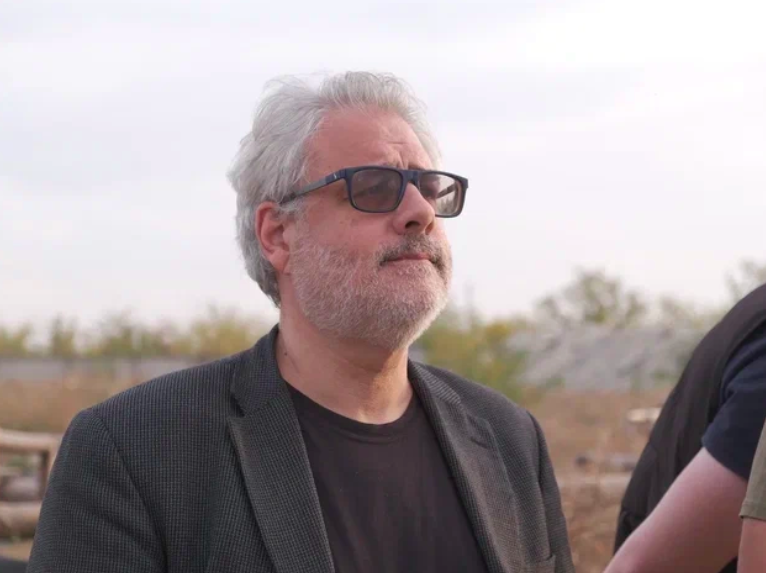
After the Special Military Operation, some Ukrainian students who came to study at the university on a special scholarship and were proudly supported, apparently complained about me to the dean even though they were not in my class. After the semester break, I was told not to return to school next semester after my twelve years.”
When we asked how he managed to see the events in Ukraine from a perspective different than the prevailing in the West, he replied:
“At least since 2016, I’ve been writing about the war and Donbass. Back then, it wasn’t getting this much attention. I was very interested in both the Soviet Union and its collapse. What we see in Ukraine and Russia right now is a direct consequence of the developments following the collapse of the Soviet Union.
As you know, in early 1991, a referendum was held across the USSR, and people wanted the USSR to continue by a rate of 78%. Still, they decided to dissolve it. They didn’t even know how to do it. We are still dealing with the consequences.”







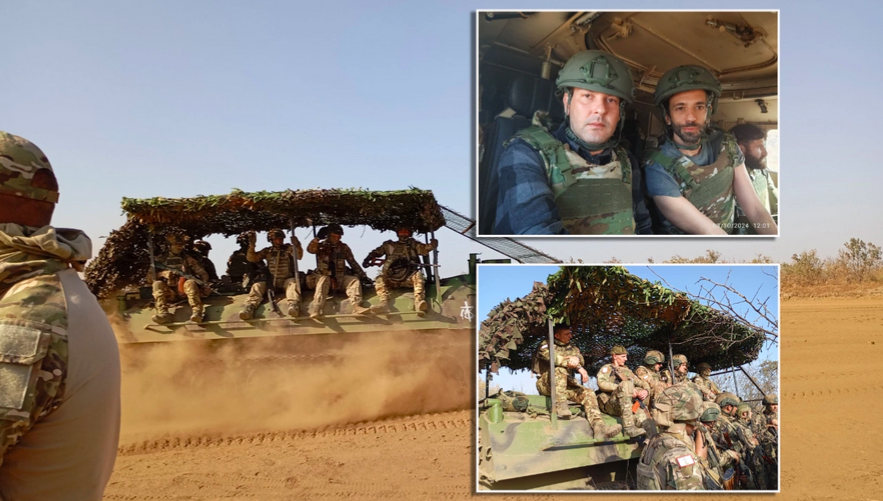





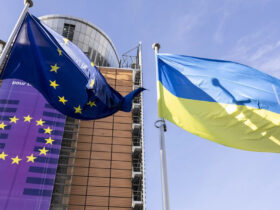
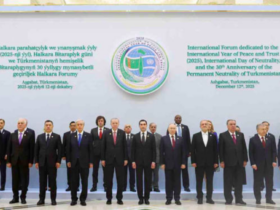
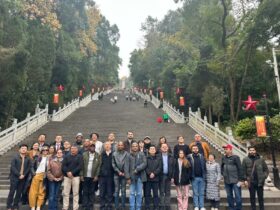

Leave a Reply